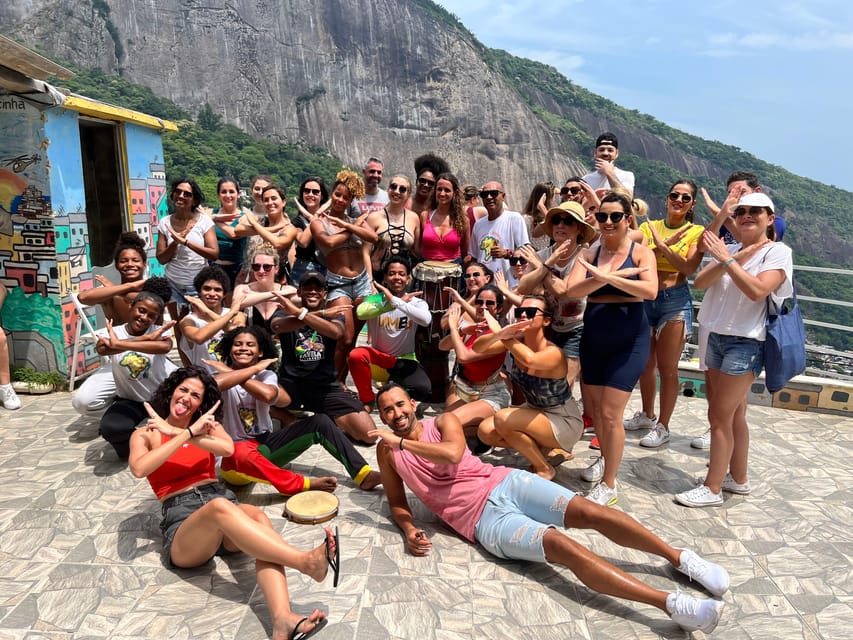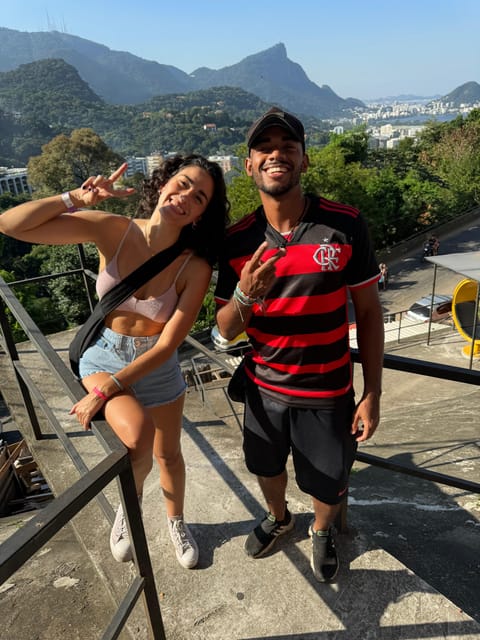The word "favela" has long held a certain mystique, evoking images of sprawling, impoverished communities on the fringes of Rio de Janeiro. Yet, these vibrant urban neighborhoods harbor a rich history and complex social dynamics that defy simplistic stereotypes. Tracing the origins of favelas like the iconic Rocinha, one uncovers a story of resilience, community-building, and the survival of cultural traditions in the face of adversity. To truly understand the real life behind this much-discussed term, one must venture beyond the surface and take in the sights, sounds, and experiences that define the favela‘s unique character.
Key Points

- The term "favela" originated from former Canudos War soldiers who settled in the hills of Rio de Janeiro and built makeshift housing on vacant land.
- Rocinha Favela, one of the largest informal settlements in Rio, has a rich history dating back to the 1940s when it was established by former World War II soldiers.
- Despite the challenges, the Rocinha Favela has developed a unique culture, economy, and social structure, with a vibrant daily life characterized by entrepreneurship, cooperation, and community spirit.
- The mototaxi ride through the favela’s narrow alleys offers visitors an exhilarating perspective of the colorful buildings and stunning panoramic views of Rio.
- Visitors can explore the favela’s winding alleys, observe a capoeira social project, and gain an authentic glimpse into the resilience and creative expression of the favela community.
Story Behind the Word "Favela"

The term "favela" originated in the late 19th century when former soldiers who’d fought in the Canudos War settled in the hills of Rio de Janeiro, constructing makeshift housing on vacant land.
These settlements, which grew rapidly, came to be known as favelas, after the Favela hill where one of the first such communities was established. The word itself comes from the name of a hardy shrub, favela, which grew abundantly in the area.
Over time, favelas have evolved into complex urban neighborhoods, often plagued by poverty and crime, but also vibrant communities with rich cultural traditions.
You can also read our reviews of more tours and experiences in Rio De Janeiro.
History of the Rocinha Favela

Situated on the slopes of São Conrado, the Rocinha Favela is one of the largest and most well-known informal settlements in Rio de Janeiro. Its history can be traced back to the 1940s when former soldiers and their families, who’d fought in World War II, began settling in the area.
Over the decades, the favela has grown exponentially, with residents building homes and establishing a thriving community. Today, Rocinha is home to an estimated 70,000 to 100,000 people, making it one of the most densely populated areas in the city.
Despite the challenges faced by its residents, the favela has developed its own unique culture, economy, and social structure.
Daily Life in the Favela

Living in the Rocinha Favela involves a vibrant and multifaceted daily routine. Residents wake up early and head out to their jobs, whether as vendors, service workers, or small business owners.
Throughout the day, the favela’s narrow streets and alleys bustle with activity, as neighbors greet each other, children play, and vendors hawk their wares. In the evenings, the community comes together for social events, sports, and cultural activities.
Despite the challenges of living in an informal settlement, the people of Rocinha have built a tight-knit, resilient community, where daily life is characterized by a spirit of entrepreneurship, cooperation, and celebration of their unique identity and heritage.
Mototaxi Ride and City Views

As visitors venture into the Rocinha Favela, they’re first whisked away on an exhilarating mototaxi ride, where they can admire the stunning panoramic views of Rio de Janeiro’s iconic landmarks. These nimble, two-wheeled vehicles weave through the narrow alleys, offering a thrilling perspective of the favela’s colorful buildings cascading down the hillside.
From this vantage point, travelers gaze out over the sprawling city, catching glimpses of Christ the Redeemer statue and the shimmering Guanabara Bay. The mototaxi ride not only provides an adrenaline-fueled introduction to the favela but also sets the stage for an immersive exploration of the community’s vibrant daily life.
More Great Thing To Do NearbyVisiting a Typical House
After the exhilarating mototaxi ride, the tour winds its way through the winding alleys, eventually leading visitors to a typical house within the Rocinha Favela. Once inside, guests are greeted by the warm hospitality of the residents, who proudly showcase their humble abode.
The house, while modest in size, is a testament to the resilience and ingenuity of the favela’s inhabitants, who’ve turned their limited space into a cozy and functional living environment. Visitors are then ushered to the rooftop, where they’re treated to a panoramic view of the sprawling favela and the stunning vistas of Rio de Janeiro beyond.
- Arraial Do Cabo Tour From Rio De Janeiro
- Private and Customized City Tour of Rio De Janeiro
- Private City Tour of Rio De Janeiro
- Morning Sailing Tour in Rio De Janeiro – DDRIO
- Rios Full Day: Selarón Steps, Christ & Sugarloaf – Tickets & Lunch Included
- Skip the Line: Fast Pass Ticket for Sugarloaf Mountain
Walking the Favela Alleys

From the cozy confines of the typical house, the tour group sets out to explore the winding alleys of the Rocinha Favela. The narrow passages are bustling with activity, as residents go about their daily lives.
The guide points out the vibrant colors of the buildings, each one unique and reflective of the community’s personality. Along the way, the group encounters small shops, community centers, and locals who greet them with a warm smile.
The guide explains the intricate network of the favela, how the alleys interconnect and the residents navigate their neighborhood. This immersive experience provides an authentic glimpse into the vibrant culture and resilience of the favela community.
Capoeira Social Project

The tour group then makes its way to a social project focused on the traditional Afro-Brazilian martial art of capoeira. Capoeira is an integral part of favela culture, blending dance, acrobatics, and self-defense.
At the project, visitors observe a capoeira class, learning about its history and watching the students’ fluid movements. The instructor explains how capoeira provides an outlet for favela youth, teaching discipline, teamwork, and confidence.
Guests have the opportunity to try the basic steps themselves, guided by the experienced capoeira practitioners. This visit offers a glimpse into the vibrant community spirit and creative expression that thrives within the favela.
Tour Booking and Details

Booking this immersive favela tour is straightforward. Travelers can reserve their spot easily and pay later, with free cancellation up to 24 hours in advance.
The tour is valid for 2.5 hours and available in multiple languages, including French, English, Portuguese, and Spanish. Guests should note the restrictions – the tour isn’t suitable for children under 2, pregnant women, or those with back problems or mobility issues.
With stunning city views, a visit to a typical house, and an exploration of a Capoeira social project, this tour offers a unique and insightful glimpse into the daily life of the favela community.
Frequently Asked Questions

How Safe Is It to Visit a Favela in Rio?
Visiting a favela in Rio can be relatively safe with a reputable tour guide. However, it’s important to exercise caution, follow the guide’s instructions, and avoid wandering off on one’s own to ensure a secure and enriching experience.
Can I Take Photographs During the Tour?
The tour generally allows guests to take photographs during the visit, though it’s important to be respectful and ask permission before taking pictures of individuals. Photos are a great way to capture the vibrant culture and daily life of the favela.
What Is the Best Time of Day to Visit the Favela?
The best time to visit the favela is typically in the morning or early afternoon. This allows visitors to experience the daily life and routines of the community, while avoiding potential safety concerns that may arise later in the day.
Do I Need to Have Any Special Skills for the Capoeira Activity?
No, you don’t need any special skills for the capoeira activity. The tour includes a visit to a social project where you can observe and participate in a basic capoeira demonstration, regardless of your skill level.
Can I Bring My Own Food and Drinks on the Tour?
No, participants can’t bring their own food and drinks on the tour. The tour includes a visit to a typical house, where snacks and drinks may be provided, as well as a stop at a capoeira project. Bringing outside items is not permitted.
Recap
The favelas of Rio de Janeiro offer a unique opportunity to take in a vibrant, resilient, and culturally rich urban community. Visitors can explore the lively streets, witness the local economy, and partake in traditions like capoeira, gaining a deeper understanding of the favela’s complex history and the daily lives of its residents. Though challenged by socioeconomic issues, the favelas continue to thrive as dynamic, multifaceted neighborhoods.
You can check if your dates are available here:More Tour Reviews in Rio De Janeiro
- Discover Noronha: 7-Hour Ilhatour Adventure
- Private Sugar Loaf With Fast Pass Ticket and Hotel Pick up
- Rio De Janeiro: 30-Minute Tandem Paragliding Flight
- Rio De Janeiro: Vasco Da Gama Matchday Experience With Local
- Rio Essencial: the 3 Must-See Tourist Attractions
- From Rio: Arraial Do Cabo Day Trip With Boat Tour
Not for you? Here's more things to do in Rio De Janeiro we have recnetly reviewed
- 6 Best Canoe And Kayak Experiences In Rio De Janeiro
- 6 Best Canoe And Kayak Experiences In Rio De Janeiro
- 14 Best Food Tours in Rio De Janeiro
- 20 Best Full-Day Tours in Rio De Janeiro
- 2 Best 2 Day Tours In Rio De Janeiro
- 3 Best 3 Day Tours in Rio De Janeiro
- Best Jet-Ski Experiences in Rio De Janeiro
- 2 Best 4 Day Tours in Rio De Janeiro
- 3 Best BBQ Experiences In Rio De Janeiro
- 20 Best Photography Experiences in Rio De Janeiro
- 14 Best Dining Experiences In Rio De Janeiro
- 14 Best Dinner Tours In Rio De Janeiro
